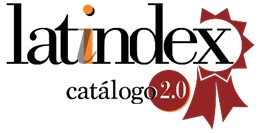Modelling as a vehicle for the development of covariational reasoning in secondary education
DOI:
https://doi.org/10.48489/quadrante.23687Keywords:
covariational reasoning, models and modelling, participatory simulations, collective activityAbstract
This article describes how the development of covariational reasoning is favoured in 18 students (14 years old), through modelling activities, supported by participatory simulations to address the problem of scarce access to medical care in Mexican indigenous populations, placing secondary school students in different scenarios occurring in the spread of a disease. The design-based research was used as the research methodology and the experimentation phase is emphasized to describe the collective activity of the students and understand how they developed an awareness of the situation. Multiple interactions between participants are analysed using Toulmin’s argumentation schemes and the covariational reasoning development framework. From the participation of students as active agents within the simulations, emerging models provoke discussions that lead to their refinement. Finally, the abstraction of the model emerges from the patterns of the information relative to the emergent structure, approaching the mathematized description of the presented reality.
References
Brady, C., Eames, L., & Lesh, D. (2015). Connecting real-world and in-school problem-solving experiences. Quadrante, 24(2), 5-38. https://doi.org/10.48489/quadrante.22924
Blum, W., Galbraith, P., Henn, H-W., & Niss, M. (Eds.). (2007). Modelling and applications in mathematics education: The 14th ICMI Study. (1ª. ed.). Springer. https://doi.org/10.1007/978-0-387-29822-1
Cantoral, R. (2004). Desarrollo del pensamiento y lenguaje variacional, una mirada socioepistemológica. Acta Latinoamericana de Matemática Educativa, 17, 1-9.
Carlson, M. (1998). A cross-sectional investigation of the development of the function concept. In E. Dubinsky, A. Schoenfeld & J. Kaput (Eds.), Research in collegiate mathematics education, 111. Issues in Mathematics Education, 7, 115-162. https://doi.org/10.1090/cbmath/007/04
Carlson, M., Jacobs, S., Coe, E., Larsen, E., & Hsu, E. (2002). Applying covariational reasoning while modeling dynamic events: A framework and a study. Journal for Research in Mathematics Education, 33(5), 352-378. https://doi.org/10.2307/4149958
Carlson, M., Larsen, S., & Lesh, R. (2003). Integrating a models and modeling perspective with existing research and practice. In R. Lesh, & H. Doerr (Eds.), Beyond construtivism: Models and modeling perspectives on mathematics problem solving, learning, and teaching (pp. 465-478). Lawrence Erlbaum Associates. https://doi.org/10.4324/9781410607713
Cobb, P., & Gravemeijer, K. (2008). Experimenting to support and understand learning processes. In A. E. Kelly, R. A. Lesh, & J. Y. Baek (Eds.), Handbook of design research methods in education: Innovations in science, technology, engineering and mathematics learning and teaching (pp. 68-95). Routledge. https://doi.org/10.4324/9781315759593
EducaLab (2015). Preguntas liberadas de PISA como recursos didácticos de Matemáticas. http://educalab.es/inee/evaluaciones-internacionales/preguntas-liberadas-pisa-piaac/preguntas-pisa-matematicas
Gravemeijer, K. (1999). How emergent models may foster the constitution of formal mathematics. Mathematical Thinking and Learning, 1(2), 155-177. https://doi.org/10.1207/s15327833mtl0102_4
INEE (2017). México en PISA 2015. https://www.inee.edu.mx/wp-content/uploads/2019/01/P1D316.pdf
León, C. (2017). El pensamiento covariacional y GeoGebra: Herramientas para la explicación científica de algunas realidades. Tecné, Episteme y Didaxis TED, 2(42), 159-171. https://doi.org/10.17227/01203916.6969
Lesh, R., & Doerr, H. (2003). Foundations of a models and modeling perspective in mathematics teaching, learning, and problem solving. In R. Lesh, & H. Doerr (Eds.), Beyond constructivism: Models and modeling perspectives on mathematics problem solving, learning, and teaching (pp. 3-34). Lawrence Erlbaum Associates. https://doi.org/10.4324/9781410607713
Lesh, R., Doerr, H., Cramer, K., Post, T., & Zawojewski, J. (2003). Model development sequences. In R. Lesh, & H. M. Doerr (Eds.), Beyond constructivism. Models and modeling perspectives on mathematics problem solving, learning, and teaching (pp. 35-58). Lawrence Erlbaum Associates. https://doi.org/10.4324/9781410607713
Monk, S. (1992). Students’ understanding of a function given by a physical model. In G. Harel, & E. Dubinsky (Eds.), The concept of function: Aspects of epistemology and pedagogy (pp. 175-193). Mathematical Association of America.
Monk, S., & Nemirovsky, R. (1994). The case of Dan: Student construction of a functional situation through visual attributes. CBMS Issues in Mathematics Education, 4, 139-168.
NCTM. (2000). Principios y estándares para la educación matemática. Thales.
Oehrtman, M., Carlson, M., & Thompson, P. (2008). Foundational reasoning abilities that promote coherence in students' understandings of function. In M. P. Carlson, & C. Rasmussen (Eds.), Making the connection: Research and practice in undergraduate mathematics (pp. 27-42). Washington, DC: Mathematical Association of America. https://doi.org/10.5948/UPO9780883859759.004
Rasmussen, C., & Stephan, M. (2008). A methodology for documenting collective activity. In A. E. Kelly, R. A. Lesh, & J. Y. Baek (Eds.), Handbook of design research methods in education: Innovations in science, technology, engineering and mathematics learning and teaching (pp. 195-215). Lawrence Erlbaum Associates. https://doi.org/10.4324/9781315759593
Secretaría de Educación Pública (2017). Aprendizajes clave para la educación integral. Matemáticas. Educación secundaria. Plan y programa de Estudio, orientaciones didáctica y sugerencias de evaluación. Secretaría de Educación Pública. https://www.planyprogramasdestudio.sep.gob.mx/descargables/biblioteca/secundaria/mate/1-LPM-sec-Matematicas.pdf
Stroup, W., Ares, N., & Hurford, A. (2005). A dialectic analysis of generativity: Issues of network-supported design in mathematics and science. Mathematical Thinking & Learning, 7(3), 181-206. https://doi.org/10-1207/s15327833mtl0703_1
Stroup, W., Ares, N., Hurford, A., & Lesh, R. A. (2007). Diversity-by-design: The why, what, and how of generativity in next-generation classroom networks. In R. A. Lesh, E. Hamilton, & J. J. Kaput (Eds.), Foundations for the future in mathematics education (pp. 367-393). Lawrence Erlbaum Associates. https://doi.org/10.4324/9781003064527
Stroup, W., & Wilensky, U. (2014). On the embedded complementarity of agent-based and aggregate reasoning in students developing understanding of dynamic sistems. Technology, Knowledge and Learning, 19, 19-52. https://doi.org/10.1007/s10758-014-9218-4
Thompson, P. (1994). Images of rate and operational understanding of the fundamental theorem of calculus. Educational Studies in Mathematics, 26, 229-274. https://doi.org/10.1007/BF01273664
Thompson, P., & Carlson, M. (2017). Variation, covariation, and functions: Foundational ways of thinking mathematically. In J. Cai (Ed.), Compendium for research in mathematics education (pp. 421-456). National Council of Teachers of Mathematics.










